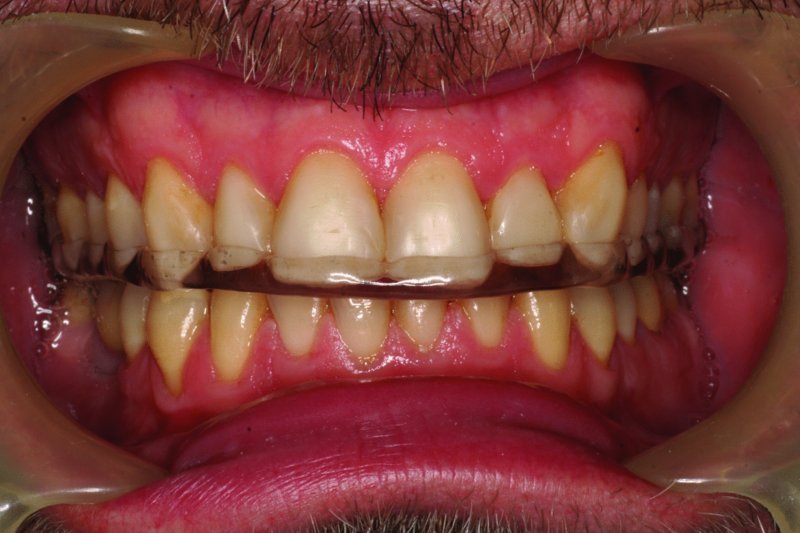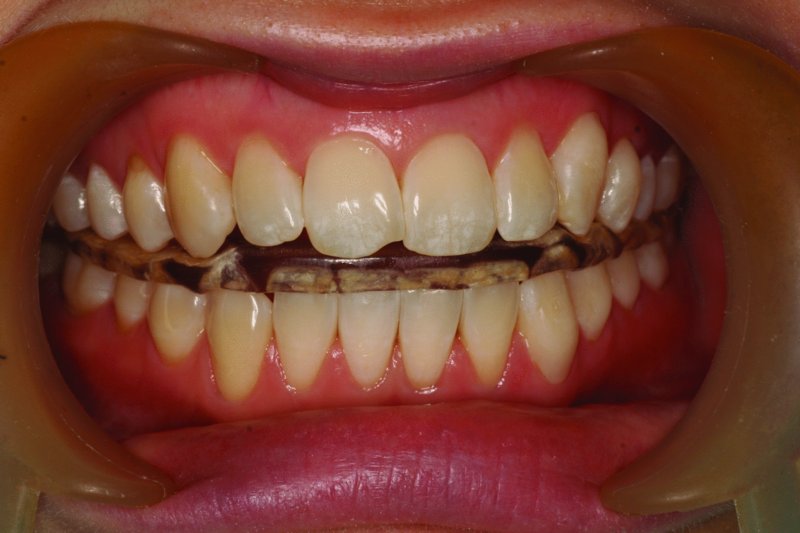Occlusal Stabilisation Splints
Subir Banerji and Shamir B. Mehta
Principles
An occlusal splint may be defined as a ‘removable appliance covering some or all of the occlusal surfaces of the teeth in either the maxillary or mandibular arches’.1
Splints may be classified according to their level of coverage (full versus partial), their consistency (hard or soft), the arch to which they may be applied or whether they reposition the mandible into a pre-determined position or are flat, thus of the stabilisation variety.
The use of a splint may be considered in the following circumstances:
- Attempting to locate (and/or reposition a patient into) centric relation
- Management of temporomandibular joint disorders
- Diagnosis of occlusal pathology
- Stabilisation of the occlusal scheme prior to complex restorative care provision, including the assessment of patient tolerance to an occlusal scheme, with an altered vertical occlusal dimension
- Providing passive (preventative) management for cases of pathological tooth wear
- Attempting to create intra-occlusal clearance by the process of relative axial movement (occlusal adaptation) for cases such as those displaying tooth wear
- Protection of the natural and/or restored dentition during parafunctional (bruxist) activity
The ability to prescribe and construct a stabilisation splint has many merits for the restorative dentist. Stabilisation splints may be used for each of the above indications, and will be discussed further in this chapter.
The stabilisation splint essentially provides the patient with a removable ‘ideal occlusal scheme’ according to the principals of the mutually protected occlusal scheme. The use of a resilient material such as heat-cured acrylic culminates in a durable appliance that may be suitably contoured to the desired prescription, can be readily adjusted and will be minimally abrasive to antagonistic surfaces.
The maxillary stabilisation splint is commonly referred to as a Michigan splint, while the mandibular stabilisation splint is often termed a Tanner appliance. Examples are depicted in Figures 3.6.1 and 3.6.2, respectively. Although both offer analogous outcomes, the latter are perhaps more suitable for patients displaying a Class 3 incisor relationship (as it may prove easier to develop the desired occlusal scheme) or where tolerance of a maxillary appliance may be of concern.

Figure 3.6.1 A maxillary, hard full-coverage acrylic Michigan splint

Figure 3.6.2 A mandibular, hard full-coverage acrylic Tanner appliance
Procedures
The account provided here relates to the construction of a Michigan splint, but the same principles apply to a mandibular stabilisation splint.
Stay updated, free dental videos. Join our Telegram channel

VIDEdental - Online dental courses


